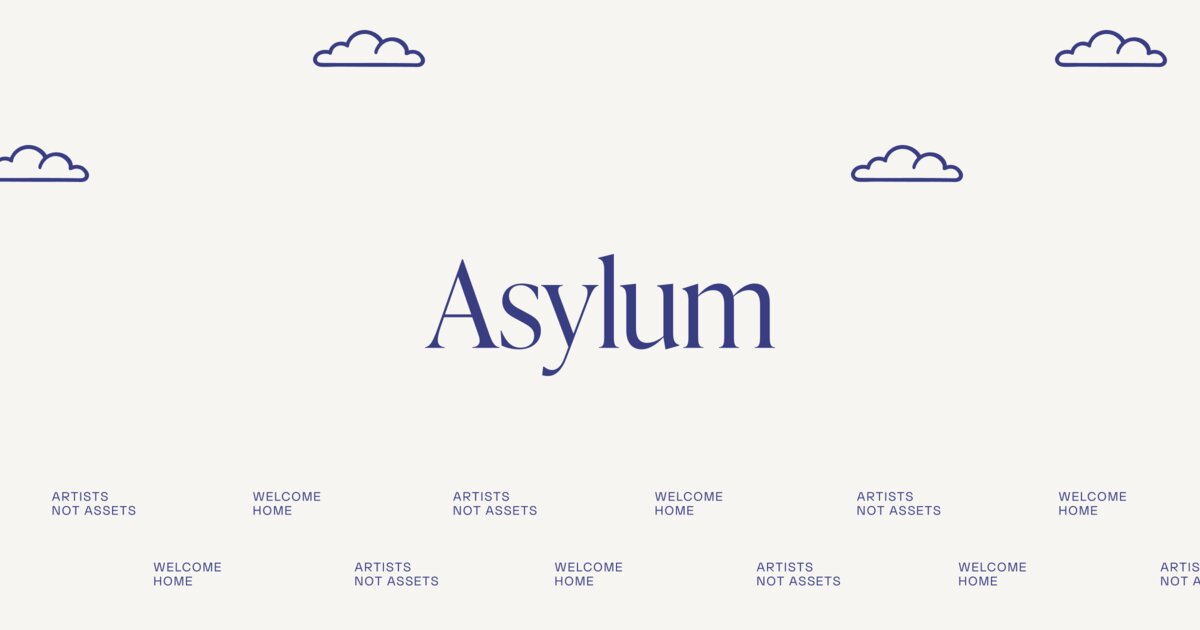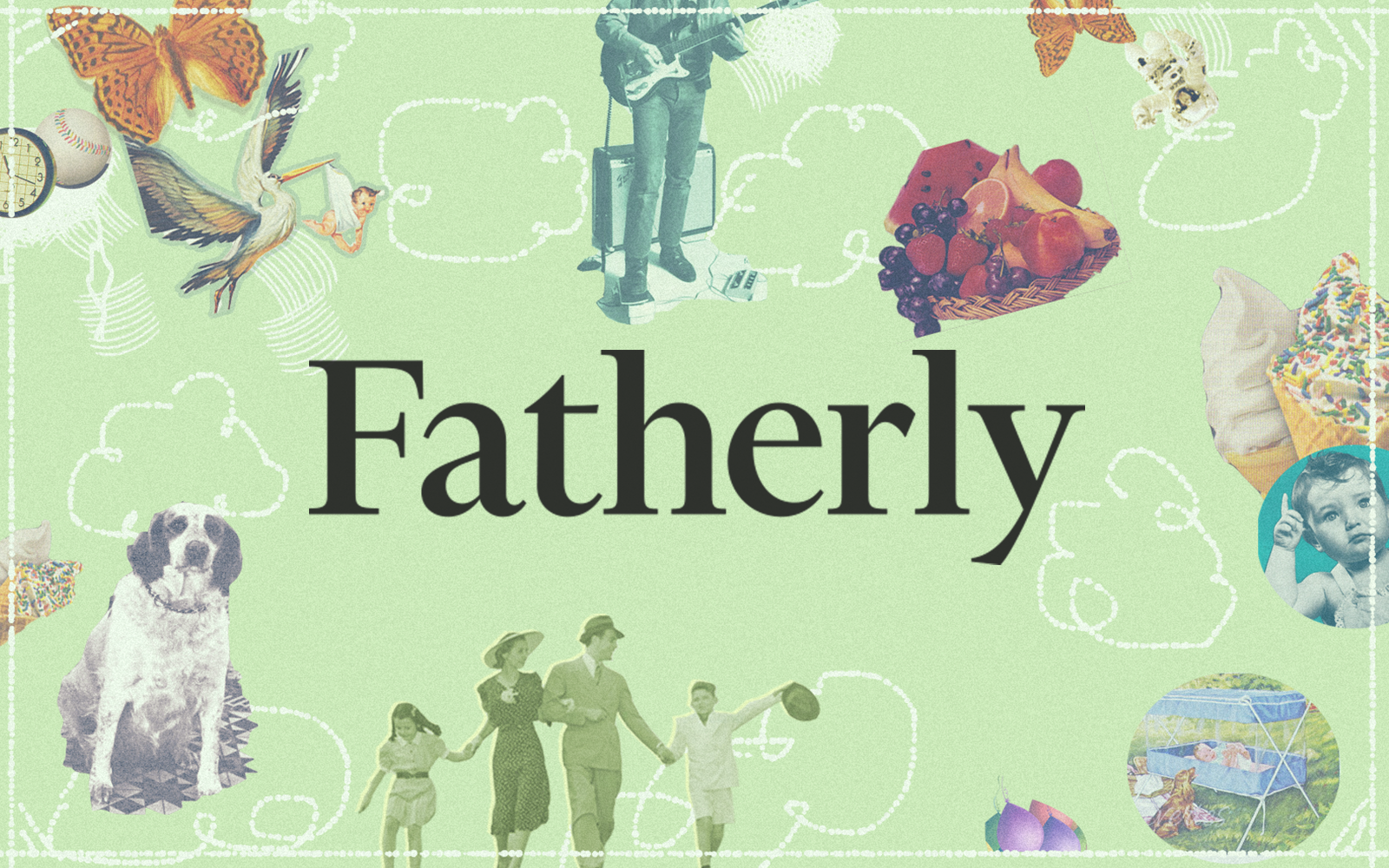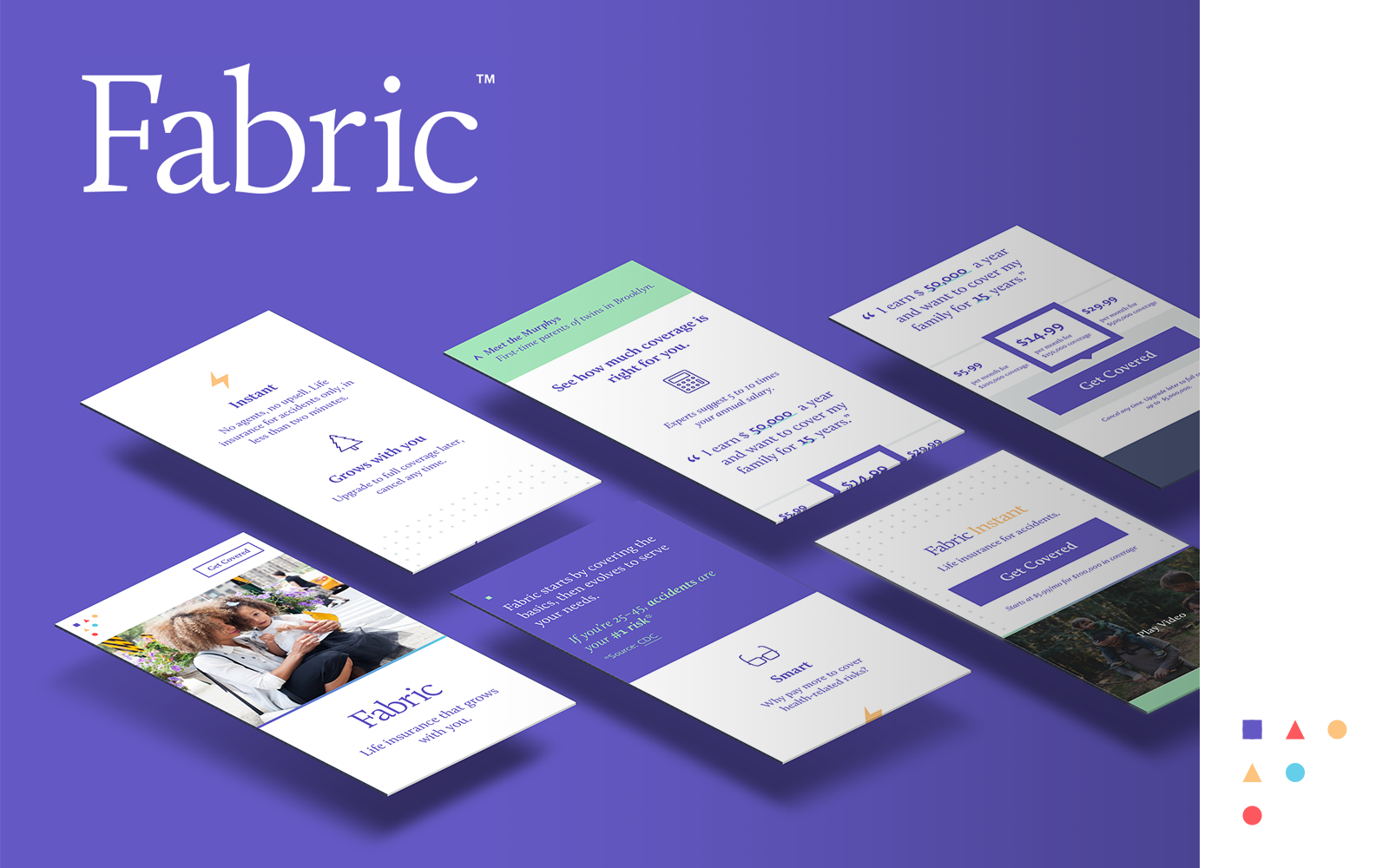Under After built an immersive environment to experience Lost Waves music, transforming conventional album browsing into a journey across a digital ocean.
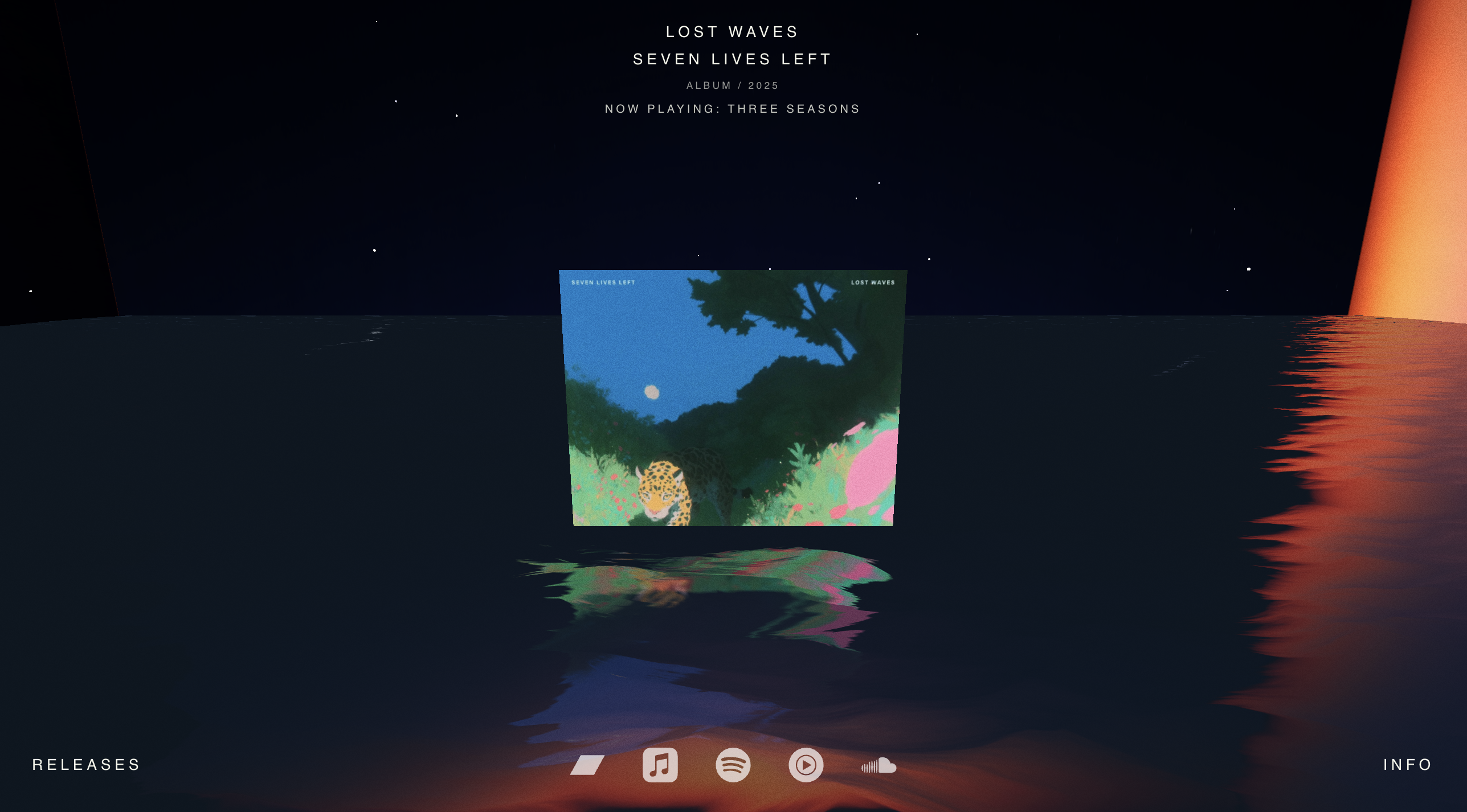
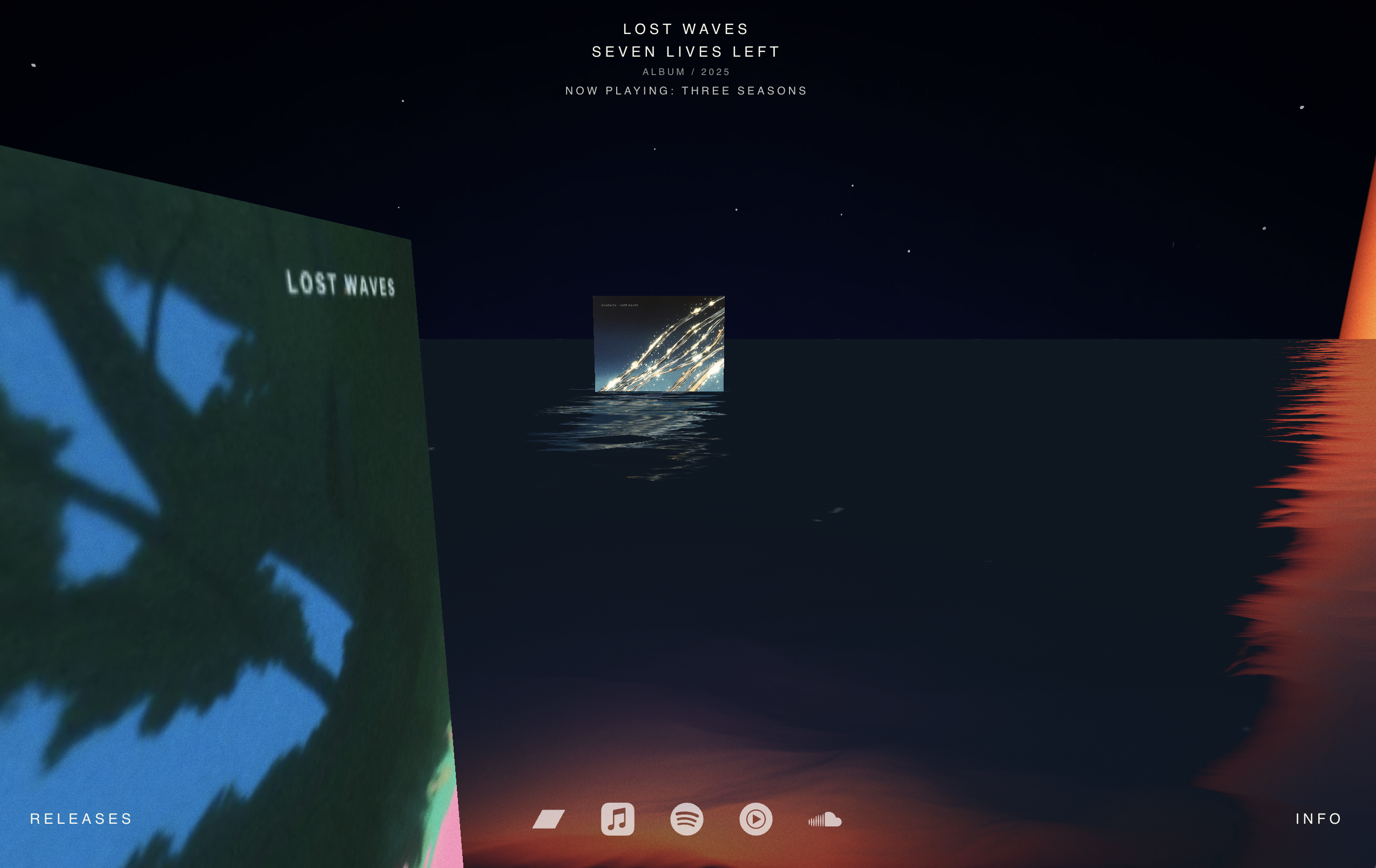
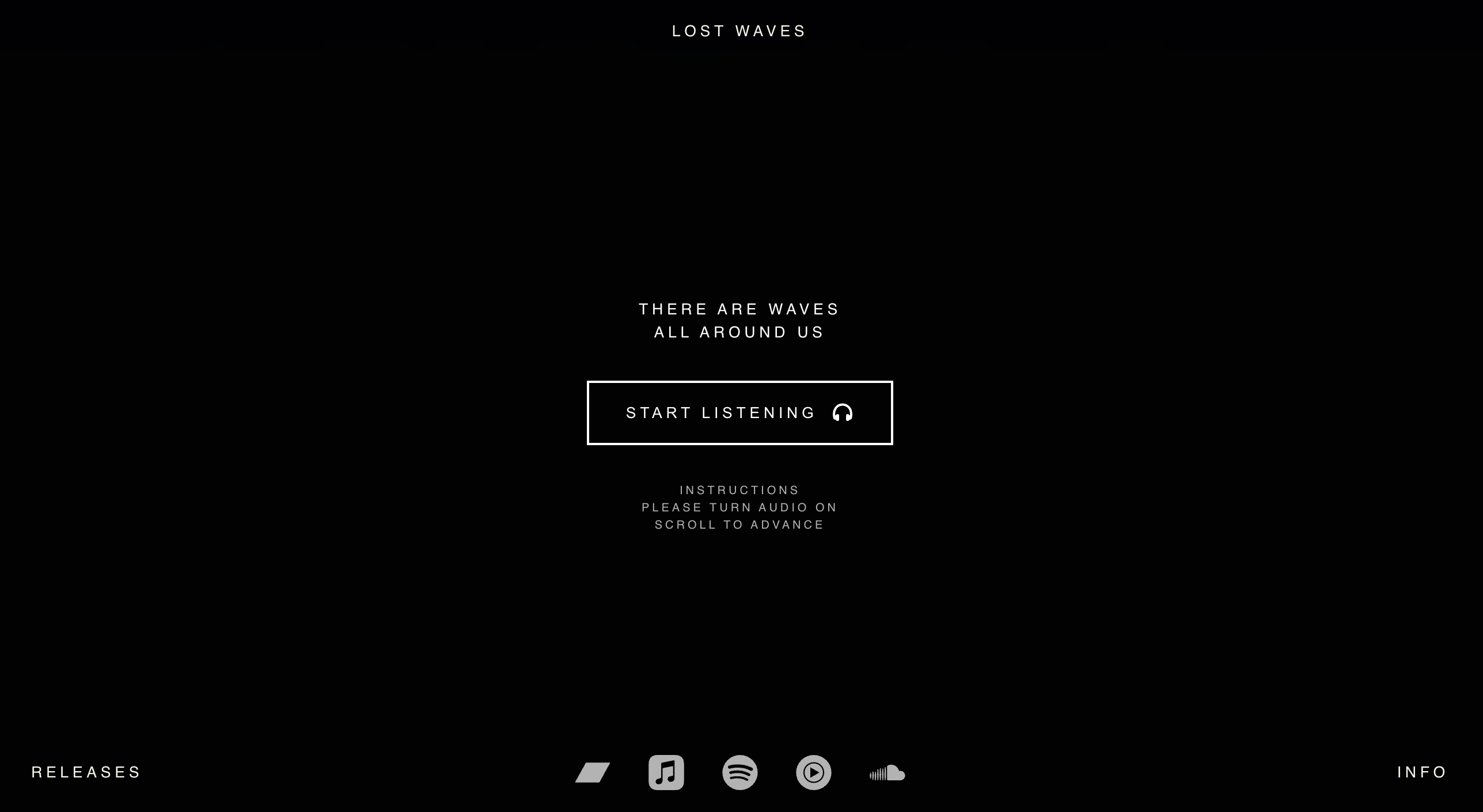
Artist music platforms follow a familiar pattern: Bandcamp offers grid layouts with play buttons, Spotify provides playlist interfaces, Soundcloud displays waveforms. These conventions work for discovery and distribution, but they flatten artistic presentation into functional browsing. For Lost Waves, an experimental electronic music project focused on meditative atmosphere, the standard options presented a problem. The music needed an environment where it belonged, not a generic player skin.
Lost Waves is Mark Forscher's personal music project. Under After designed the digital experience to match the music's immersive quality, building a 3D environment where each release floats as a reflective plane on an ocean surface. Visitors scroll through the complete discography while a star field glimmers overhead and water ripples beneath. The interface removes conventional navigation chrome, allowing the music and visual experience to dominate. The approach trades browsing convenience for atmospheric immersion.
Under After chose WebGL technology to achieve this environmental approach. Browser-based 3D rendering through Babylon.js enabled the ocean simulation, water reflections, and spatial audio navigation without requiring app downloads or plugin installations. The technical stack combined Jekyll static architecture for content management with real-time WebGL graphics for visual presentation. GSAP handled UI transitions. Claude Code supported the technical implementation.
The ocean metaphor aligned with the project name and music aesthetic. Album covers become floating objects in an infinite environment rather than items in a list. Scrolling through releases feels like traveling across water rather than clicking through pages. This approach created technical constraints: the site required custom audio crossfading, fallback experiences for devices without WebGL support, and careful performance optimization to prevent choppy rendering. But the constraints served the goal of creating an environment rather than just a player.


Technical Architecture
The site runs on Jekyll, with the static site generator acting as a content management system for album metadata while Babylon.js handles all visual rendering. This hybrid approach delivers the performance benefits of static HTML with the interactive capabilities of a WebGL application. Album data lives in structured markdown files that Jekyll compiles into JSON, which the 3D interface consumes at runtime.
The 3D ocean scene uses Babylon's WaterMaterial for realistic reflections and refractions. Album covers render as textured planes positioned along a horizontal axis, scrolling through the scene as users navigate. A custom skybox displays gradient twilight colors that reflect in the water surface.
Audio playback runs through a custom crossfading system built on the Web Audio API. Standard HTML5 audio lacks overlap capabilities needed for continuous listening experiences. Under After developed a preloading system that fetches adjacent tracks, manages playback buffers, and executes smooth volume transitions between songs. An audio gate handles browser autoplay policies, prompting user interaction before initializing playback on desktop browsers.

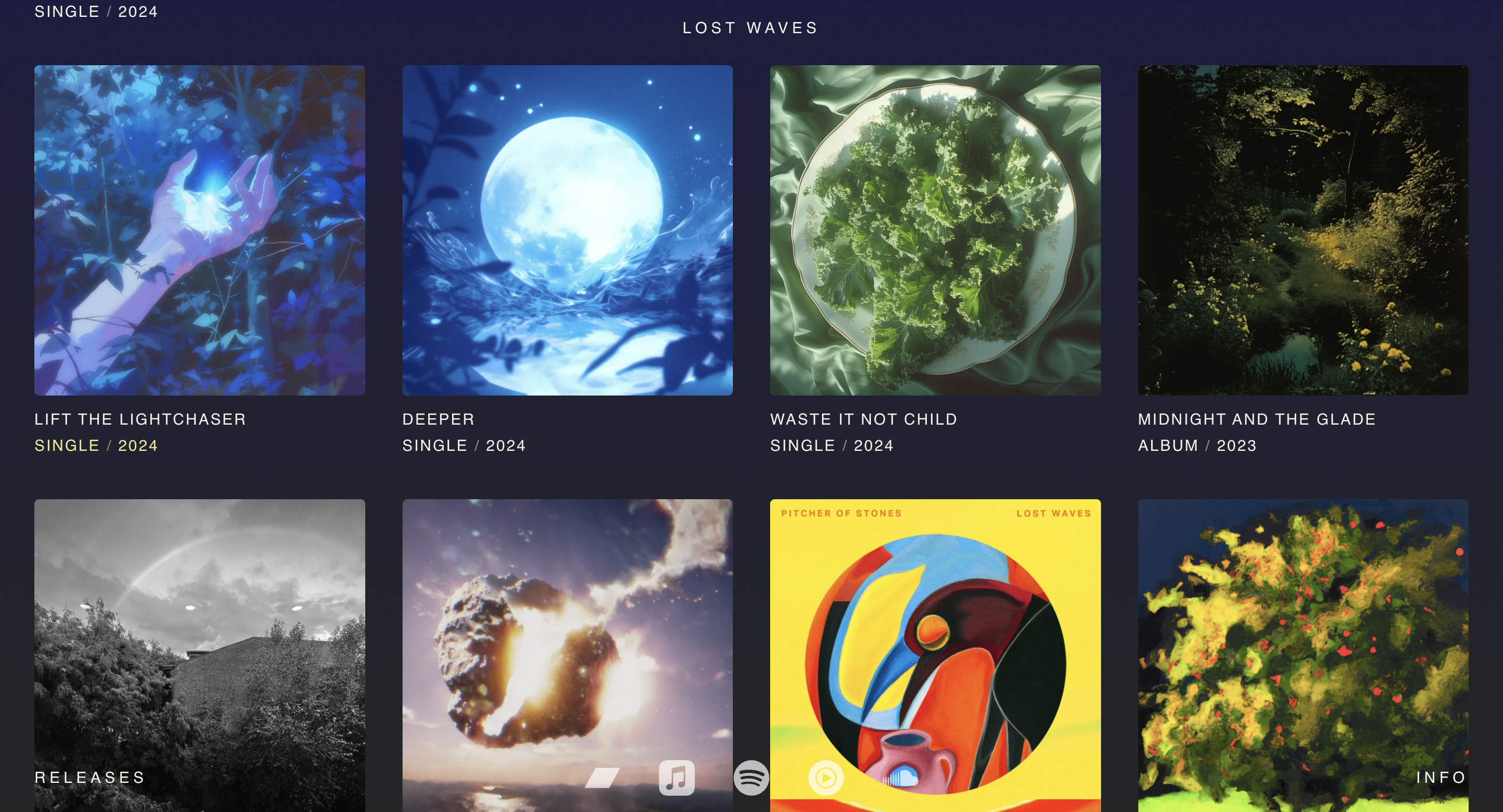
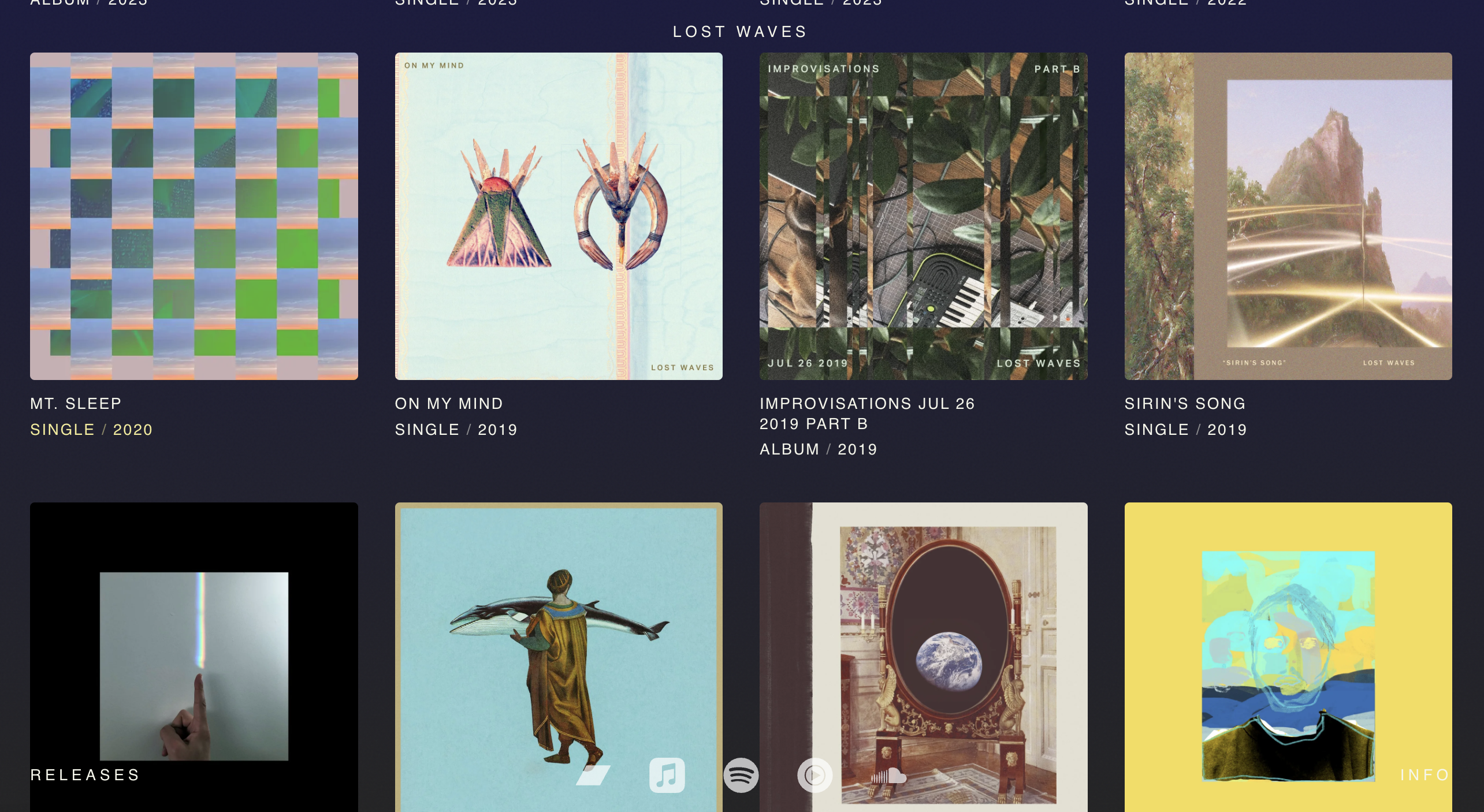

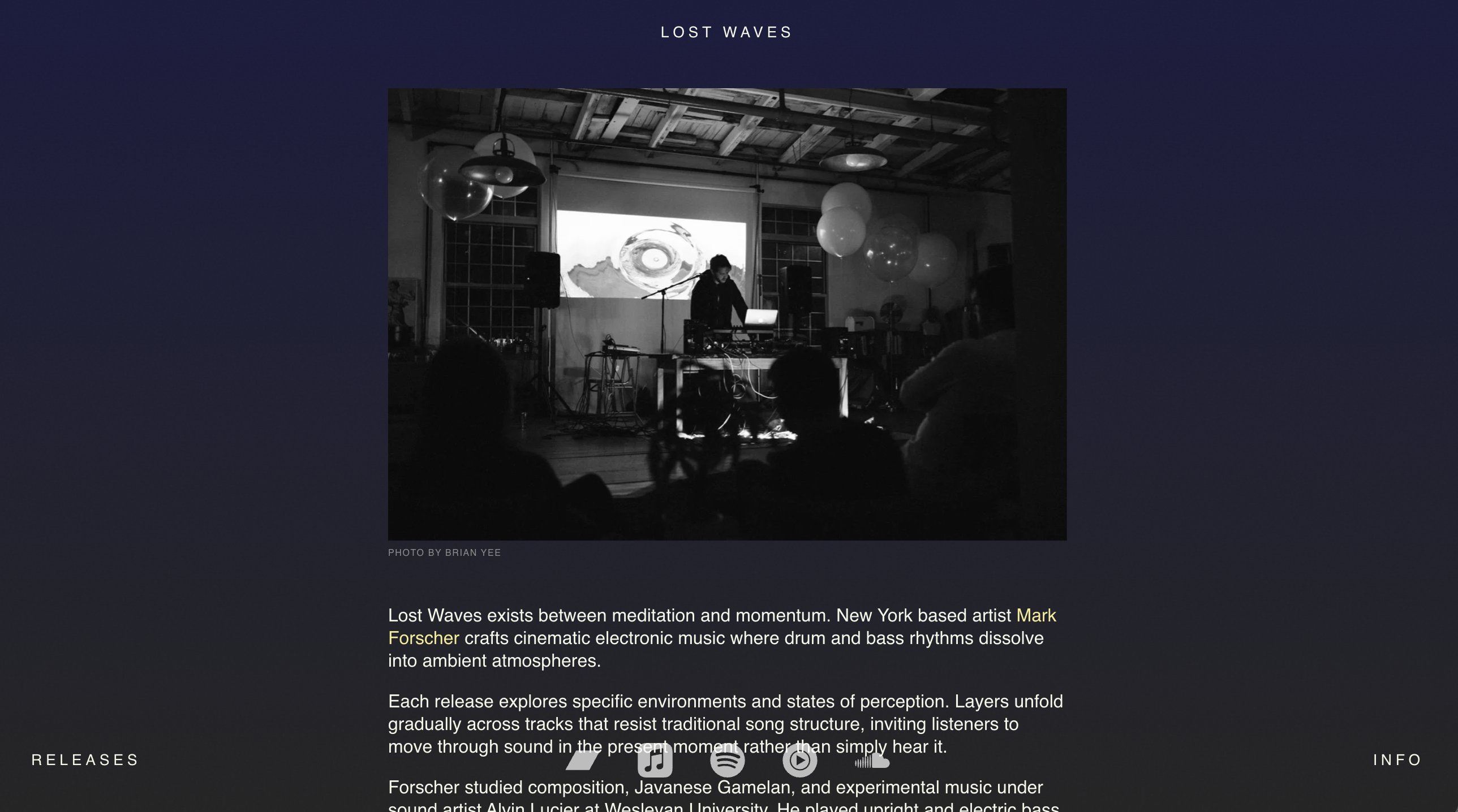
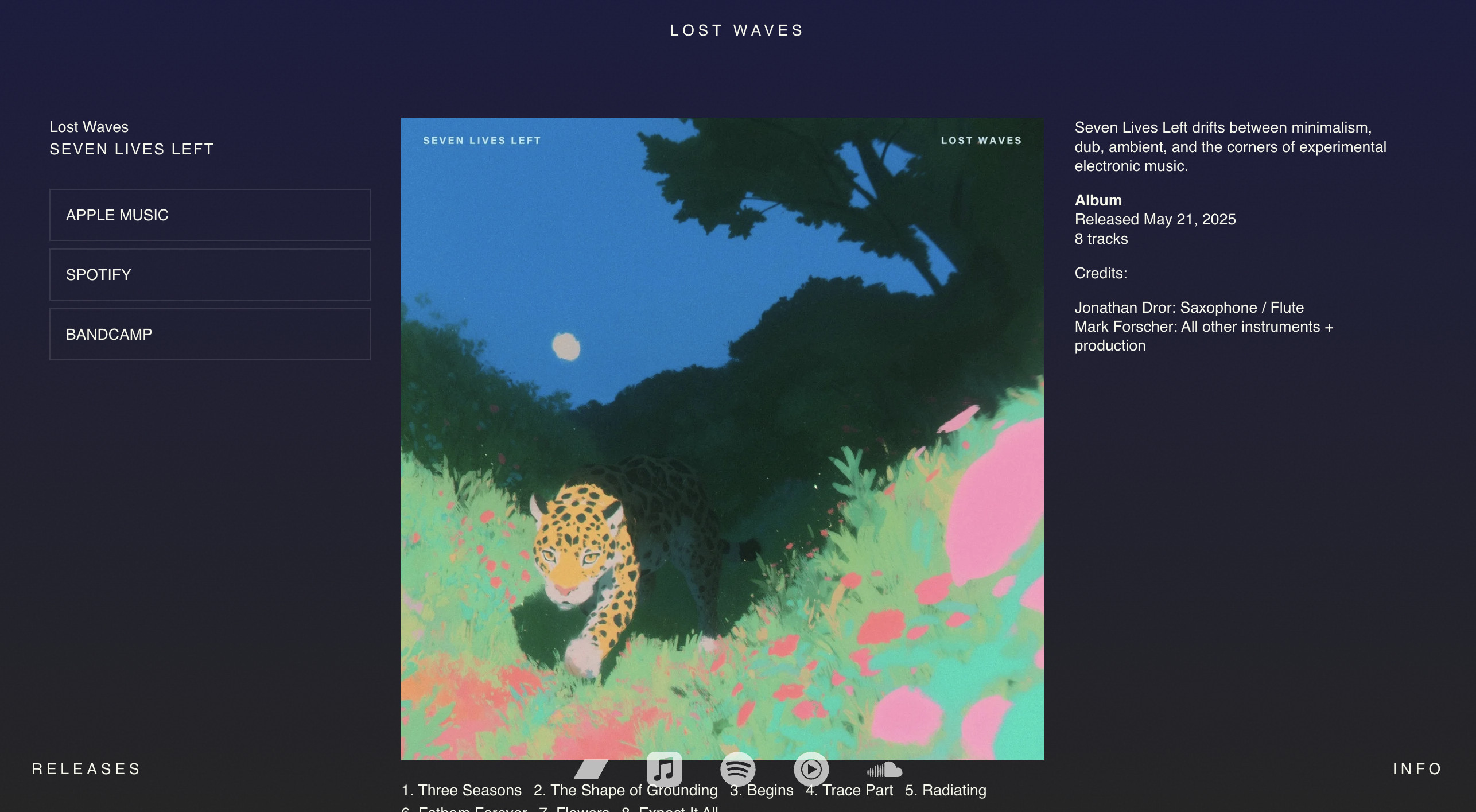

The lostwaves.com site launched in 2025 as the internet presence for Lost Waves. The digital experience positions the music project as an environmental experience rather than a typical discography. Visitors spend more time in the environment than they would browsing a conventional music page, listening through multiple tracks as they explore the ocean interface. The technical implementation demonstrates how opinionated choices about presentation can differentiate artistic projects in crowded streaming markets.
For artists considering alternatives to Bandcamp and Spotify, Lost Waves illustrates a different approach: build the environment where the music belongs, even if it requires custom technical implementation.


